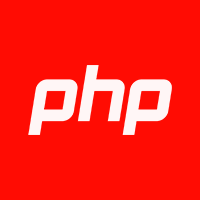-

- Golang服务部署策略有哪些 蓝绿部署与金丝雀发布
- 蓝绿部署适合稳定性优先的低频重大发布,金丝雀发布适合高频迭代与精准验证,两者可结合使用,关键在于根据业务需求选择合适策略并配合版本标识、健康检查、优雅关闭和配置外置化等实践提升Golang服务部署可靠性。
- 运维 . kubernetes 488 2025-08-15 10:14:01
-

- Python如何构建REST API?FastAPI框架快速入门
- FastAPI是构建高性能RESTAPI的首选Python框架,1.它基于类型提示和依赖注入实现代码清晰与自动文档生成;2.通过Pydantic模型验证请求体数据;3.利用依赖注入系统复用公共逻辑;4.支持APIKey、OAuth2等身份验证机制;5.可集成SQLAlchemy等ORM进行数据库操作;6.使用TestClient配合pytest完成单元测试;7.可通过Docker容器化并部署到云平台。该框架兼具高性能与开发效率,适用于现代API开发全流程,从定义路由到部署均提供完整解决方案。
- 运维 . kubernetes 502 2025-08-14 23:08:01
-

- 怎样用Golang管理K8s动态配置 详解client-go与ConfigMap交互
- 要使用Golang实时监听并响应KubernetesConfigMap变化,需通过client-go客户端结合Informer机制实现。具体步骤如下:1.初始化client-go客户端,本地使用kubeconfig文件,集群内使用InClusterConfig;2.创建SharedInformerFactory并获取ConfigMap的Informer;3.注册Add、Update、Delete事件处理函数,在Update时比较Data字段变化以避免重复触发;4.在回调中实现配置热加载逻辑,如使
- 运维 . kubernetes 988 2025-08-14 19:41:01
-

- Go项目使用Kubernetes健康检查频繁失败怎么办
- Go项目在Kubernetes中健康检查频繁失败,需从配置、应用逻辑及依赖服务等多方面排查。1.确认健康检查配置合理,initialDelaySeconds应足够长,periodSeconds不宜过短,timeoutSeconds应大于响应时间。2.健康检查应真正验证关键依赖如数据库连接,不应仅返回HTTP200OK。3.查看应用日志,关注启动错误和运行异常。4.检查Pod资源限制,避免因CPU或内存不足导致失败。5.排查网络问题,确保Pod能访问依赖服务。6.Goroutine泄漏可能导致资源
- 运维 . kubernetes 618 2025-08-14 11:14:01
-

- VSCode的超级技巧大放送!学会这些让你的项目开发如虎添翼
- 要利用VSCode的内置功能提升代码编写速度,关键在于掌握命令面板、多光标编辑、智能感知、代码片段和Emmet语法;通过使用Ctrl/Cmd+Shift+P调出命令面板可快速访问所有功能,Alt/Option+点击或Ctrl/Cmd+D实现多光标批量修改,IntelliSense提供上下文智能补全,自定义代码片段可一键生成常用代码结构,而Emmet则能通过简写快速生成HTML/CSS内容,这些功能协同作用显著提升编码效率;在扩展方面,GitLens、PathIntellisense、Docker
- 运维 . kubernetes 1039 2025-08-13 22:51:01
-

- VSCode高手的秘密武器!这些设置让你的编程体验脱胎换骨
- 要优化VSCode以实现最高效的编码工作流,必须开启自动保存、自动格式化、合理配置视觉反馈与文件排除,并深度定制快捷键和扩展。首先,设置files.autoSave为onFocusChange或afterDelay可彻底解放手动保存的负担,配合files.trimTrailingWhitespace自动清理行尾空格,保持代码整洁;其次,启用editor.renderWhitespace为all有助于发现隐藏的格式问题,editor.wordWrap设为on提升长行可读性,尤其在小屏幕或分屏时效果
- 运维 . kubernetes 342 2025-08-13 22:40:01
-

- 表单中的Kubernetes怎么支持?如何管理表单的扩展?
- Kubernetes通过部署容器化表单处理服务、利用HPA自动扩展、结合数据库持久化方案、实施微服务与队列架构实现表单扩展管理,使用应用程序验证与IngressTLS保障安全性,通过日志、指标、追踪等手段监控调试,借助Helm实现部署标准化,集成无服务器平台实现事件驱动处理,采用GitOps进行配置版本控制,并通过TLS加密、静态数据加密、Secret管理及RBAC等措施保障表单数据安全,完整实现了表单处理服务的部署、扩展与安全管理。
- 运维 . kubernetes 562 2025-08-13 19:56:01
-

- VSCode如何实现CI/CD集成 VSCode自动化构建部署的配置方法
- VSCode在CI/CD中扮演“控制面板”和“预检站”的角色,而非执行引擎;2.它通过tasks.json配置本地任务实现构建、测试等流程的预演;3.利用CI/CD平台专用扩展(如GitHubActions、AzurePipelines等)在IDE内查看状态、触发流水线;4.借助远程开发功能(Remote-SSH、Remote-Containers)实现与CI环境一致的开发调试;5.通过Docker、Kubernetes等扩展增强容器化和部署环节的集成;6.使用YAML/JSON增强扩展提升CI
- 运维 . kubernetes 264 2025-08-13 19:46:01
-

- Python怎样操作Google BigQuery?pandas-gbq
- 最常用且方便的Python库是google-cloud-bigquery,而pandas-gbq则更适合依赖pandasDataFrames的工作流;2.pandas-gbq是google-cloud-bigquery的高层封装,支持将SQL查询结果直接读入DataFrame或将DataFrame写入BigQuery表;3.安装需执行pipinstallpandaspandas-gbqgoogle-auth-oauthlibdb-dtypes;4.读取数据使用pd.read_gbq()并传入SQ
- 运维 . kubernetes 220 2025-08-13 18:42:02
-

- 通过 Airflow SparkKubernetesOperator 传递参数
- 本文档旨在解决在使用Airflow的SparkKubernetesOperator时,如何正确地将参数传递给Spark应用程序的问题。我们将探讨如何配置AirflowDAG和SparkApplicationYAML文件,以及如何在Spark应用程序中读取这些参数,从而确保参数能够成功传递并被应用程序使用。
- 运维 . kubernetes 344 2025-08-13 17:18:02
-

- Python怎样制作实时数据看板?Streamlit
- 使用Python和Streamlit制作实时数据看板的核心是持续获取数据、处理后通过Streamlit组件动态更新;2.实现方法包括利用st.empty()创建占位符并结合time.sleep()循环刷新,模拟实时更新效果;3.数据源可为API、数据库或文件流,需确保脚本能持续读取最新数据;4.通过st.session_state保存历史数据和计算结果,避免重复处理,提升效率;5.使用@st.cache_data(ttl=秒数)对耗时操作设置短时效缓存,平衡实时性与性能;6.部署可选择Strea
- 运维 . kubernetes 409 2025-08-13 14:07:01
-

- 运行Python脚本如何在Docker容器中执行 运行Python脚本的Docker环境操作技巧
- 运行Python脚本在Docker容器中的本质是创建一个独立、可复制的运行环境,确保代码在任何环境中行为一致;2.核心步骤包括编写Dockerfile定义镜像构建过程、构建镜像(dockerbuild-tmy-python-app.)、运行容器(dockerrunmy-python-app);3.Docker解决了环境依赖不一致、依赖管理混乱、部署复杂等痛点,通过将Python解释器、依赖库和代码打包成不可变镜像,实现跨平台一致性;4.优化镜像体积与构建速度的方法包括:选用python:3.9-
- 运维 . kubernetes 308 2025-08-13 13:26:01
-

- Python如何实现分布式计算?Dask集群部署
- Dask集群的常见部署模式有四种:1.本地模式,适合开发测试和单机多核并行;2.分布式独立模式,需手动启动调度器和工作节点,适合对资源有完全控制的固定集群;3.集成Kubernetes、YARN、SLURM等集群管理器,实现动态资源调度与自动化管理;4.云平台部署,包括使用Coiled等托管服务或在AWS、GCP等VM上自建,适合弹性伸缩和免运维场景。选择时应根据数据规模、团队技术栈和运维能力决定:初学者建议从本地模式入手,已有集群管理系统的团队优先集成,追求弹性与便捷的可选云托管服务。部署时需
- 运维 . kubernetes 581 2025-08-13 09:54:02
-

- 怎么用豆包AI帮我生成CI/CD流水线 让AI设计自动化部署流程的完整指南
- 使用豆包AI生成CI/CD流水线的关键在于先明确项目结构和部署需求,包括编程语言、代码托管平台、目标部署环境及所需流程步骤;接着可让豆包AI生成具体的配置文件如GitHubActions的YAML文件;然后根据实际需要调整分支名称、添加测试步骤、更换部署目标或设置密钥管理;最后将常用配置保存为模板以提升后续项目的部署效率。
- 运维 . kubernetes 389 2025-08-13 09:19:01
-

- 如何用Golang实现云原生策略即代码方案 解析OPA的Rego语言集成
- 要在Go项目中集成OPA策略引擎,可通过使用OPA的GoSDK实现策略判断能力嵌入服务。一、OPA是一个通用策略引擎,Rego是其声明式策略语言,适合用于API鉴权、K8s准入控制等场景;在Go中集成OPA具备策略可维护性强、运行效率高、易于嵌入等优势。二、实现步骤包括:安装OPAGo模块、编写Rego策略文件、在Go代码中加载并执行策略。三、优化建议包括:1.策略热加载以实现不重启更新;2.打包策略为bundle便于部署;3.缓存实例、限制输入大小、编译为WASM提升性能。四、注意事项包括:熟
- 运维 . kubernetes 940 2025-08-13 08:11:01

PHP讨论组
组员:3305人话题:1500
PHP一种被广泛应用的开放源代码的多用途脚本语言,和其他技术相比,php本身开源免费; 可以将程序嵌入于HTML中去执行, 执行效率比完全生成htmL标记的CGI要高许多,它运行在服务器端,消耗的系统资源相当少,具有跨平台强、效率高的特性,而且php支持几乎所有流行的数据库以及操作系统,最重要的是





























